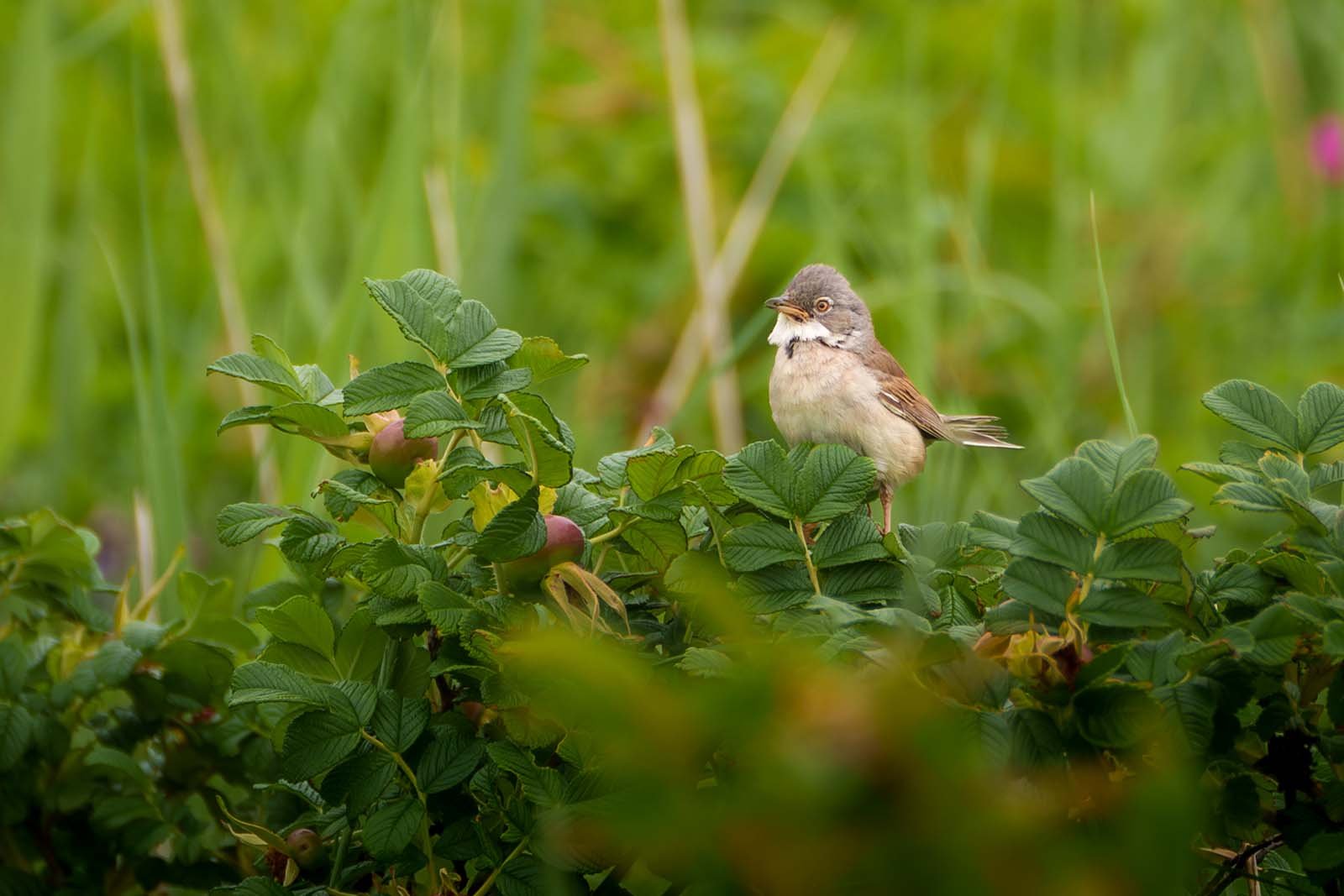Red-billed leiothrix (Leiothrix lutea)
Red-billed leiothrix (Leiothrix lutea) with yellow chest perches on a forest branch holding an insect in its beak. At Izu / Japan
Red-billed Leiothrix - Colorful, Quiet, and Settled
The Red-billed Leiothrix (Leiothrix lutea) is colorful, elusive, and introduced – discover everything about its appearance, behavior, and habitat in Japan.
Shortlist
Introduced species, well established in Japan
Bright plumage: olive, yellow, red
Eats fruit, nectar, insects
Lives in dense shrubs – forests, parks, bamboo
Not endangered, but monitored
Scientific Name: Leiothrix lutea
Common Name: Red-billed Leiothrix
German Name: Rotschnabel-Sonnenvogel
Size: approx. 15 cm
Weight: 20–25 g
Plumage: Olive green, orange-yellow, red wing accents
Bill: Bright red, short and slim
Breeding Season: May to July
Clutch Size: 3–4 eggs
Habitat: Forests, bamboo thickets, gardens
Status: Introduced, not endangered
Table of Contents
- Introduction
- Appearance
- Habitat
- Diet
- Breeding
- Year-round Behavior
- Distribution and Conservation
- Field Observations
- FAQ – Key Questions
Introduction
The Red-billed Leiothrix looks like a gem with feathers. Despite its dazzling colors, it lives quietly – mostly in dense cover. Native to South China and the Himalayas, it’s now widely established in Japan, especially on Honshū, Shikoku, and Kyūshū.
Appearance
This small bird is around 15 cm long and weighs 20–25 grams. Its colors stand out:
- Back & head: olive green
- Throat & breast: orange to golden yellow
- Wings: red and yellow accents
- Bill: bright red
- Eye-ring: pale and expressive
- Legs: slim, flesh-colored
In sunlight, its plumage shimmers as it moves.
Habitat
You’ll find it in:
- Deciduous and mixed forests
- Bamboo groves
- Gardens and urban parks
- Hilly and mid-altitude areas
It prefers dense vegetation for shelter and feeding.
Diet
An omnivore with seasonal variation:
- Berries and fruit
- Nectar
- Insects, spiders, small invertebrates
Foraging often takes place in groups (5–10), low in bushes or trees. When disturbed, it retreats quickly into cover.
Breeding
Breeding starts in May, ending by July. The nest:
- Cup-shaped
- Made of moss, roots, and grass
- Hidden in leafy cover
A clutch of 3–4 eggs is typical. Both parents incubate and feed. Young birds remain hidden until they gain independence.
Year-round Behavior
A resident species, the Leiothrix stays in the same territory all year. In winter, it may move to lower elevations if cold weather sets in – but it stays hard to spot.
Distribution and Conservation
Introduced in Japan, now:
- Widespread and stable
- Not endangered, but under scientific observation
- May compete with native birds
Researchers track how it interacts with local species.
Field Observations
You may not hear it often, but if you see it:
- A flash of red and yellow in the bushes
- Appears briefly, then vanishes
- Often in small flocks, staying quiet
Best observed early in the morning.
FAQ – Key Questions
1. Where is it originally from?
South China and the Himalayas.
2. Is it native to Japan?
No, it was introduced but is now well established.
3. When does it breed?
Between May and July.
4. How many eggs per clutch?
Usually 3 to 4.
5. Is it endangered?
No. It’s stable but monitored by researchers.





















